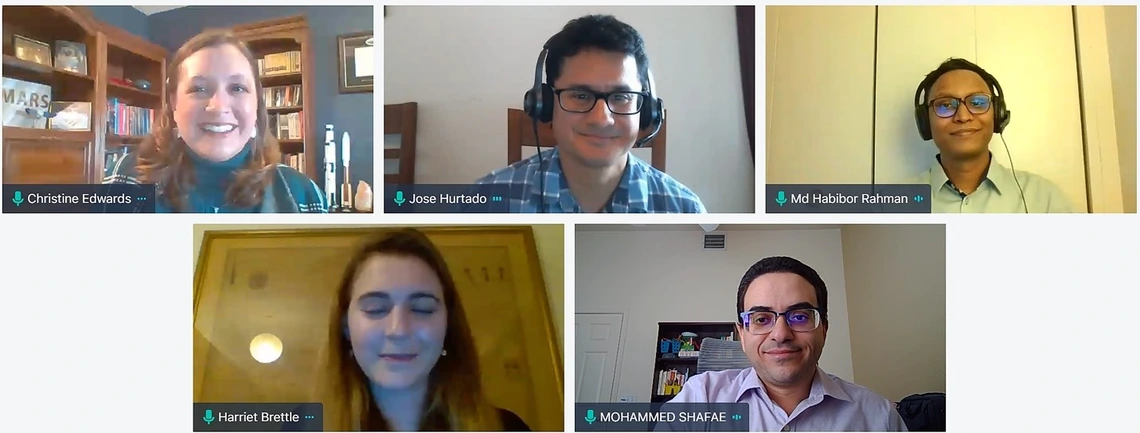SIE and MSE Team Wins First Place for 3D-Printed Moondust Project

This November, a team of University of Arizona engineers won first place at the Lockheed Martin ASCEND Propel Pitch Session. The presentation described their lunar regolith 3D printing technology, a manufacturing method that uses material from the moon’s surface to produce on-demand items – such as tools or parts for repair and refurbishment purposes. Technologies like these are critical for creating a sustainable deep space habitat in and around the moon, a NASA overarching goal.
The group included PhD student Md Habibor Rahman and assistant professor Mohammed Shafae of SIE, as well as PhD student Anna Hayes, associate professor Krishna Muralidharan and professor Douglas Loy, all of the Department of Materials Science and Engineering (MSE).
“Winning first place in the highly competitive Lockheed Martin Propel Pitch is an outstanding achievement,” said SIE department head Young-Jun Son. “I am very proud of Habibor, Dr. Shafae, and other team members in the MSE Department. Additive manufacturing in hostile environments is an important research area that has tremendous potential in space, harsh geo-terrains, and battlefields.”
The competition, in which companies, organizations, and independent groups submitted two-minute videos describing ideas for a lunar payload concept, was held on Nov. 16-18 at the American Institute of Aeronautics and Astronautics ASCEND Conference. The five pitches were judged based on their ability to advance scientific knowledge, demonstrate new technologies or engage the public.
As the student lead, Rahman presented the project, “Strategies for Lunar in Situ Resource Utilization: Adaptive Material Extrusion-based Additive Manufacturing using Lunar Regolith,”
to a panel of judges during the final round of the competition. The judges included Harriet Brettle, chair of the Space Generation Advisory Council; Jose Hurtado, professor at the University of Texas at El Paso; Sarah Jones, director of global strategic partnerships at Arizona State University; Jeffrey Montes, senior space architect at Blue Origin; and moderator Christie Edwards, deputy exploration architect at Lockheed Martin Space.
This work has been funded through a Regents' Innovation Fund grant from Arizona Board of Regents, and the team recently presented their work in a poster at the Lunar Surface Innovation Consortium.
The first-place prize includes an exclusive tour of the Lockheed Martin Space facility in Denver, CO and a space exploration swag bundle. Additionally, team members won a VIP invitation to the launch viewing of Artemis 1 – a NASA program with the goal of landing “the first woman and the next man” on the moon by 2024.

